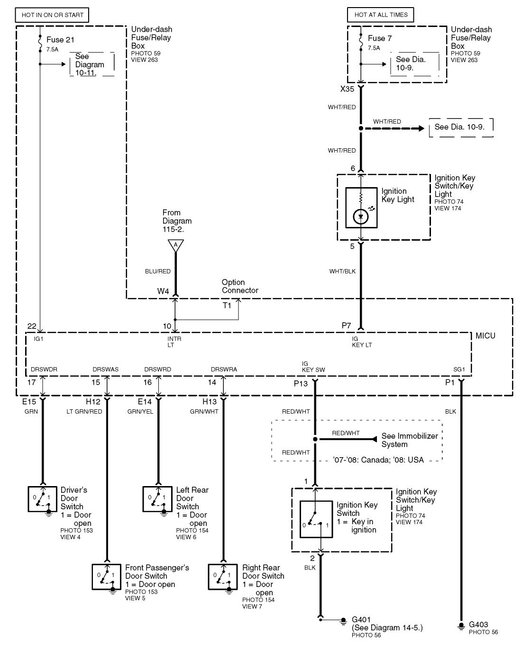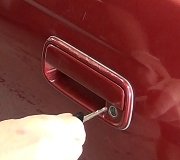Not exactly. You are looking at it as the computer is simply full of switching circuits that turn the twelve volts on and off, or that supply that input twelve volts to the door switch circuits. That would make too much sense, and is why the insane engineers feel the need to do something different. When the circuit calls for 5.0 volts, that is developed by a regulator circuit inside the computer module. Eight and ten volts have been used too on some car brands.
Before we get ourselves all wrapped around the axle with complexity that likely is not even a factor here, measure the voltage on at least one of the front switches. I am betting you are going to find twelve volts there too. That would prove the computer is not interpreting different voltages for different doors. It is just looking at the zero volts or twelve volts on the individual circuits to know which door is open.
I am not sure if you understood my less-than-ideal explanation about the 5.1 volts at the switch and at the computer. To clarify it, if you are seeing 5.1 volts at the left rear switch because of corrosion somewhere in that wire, you must have current flow through that corrosion for it to cause a voltage drop. For all practical purposes, a digital voltmeter does not draw any current. It just measures electrical pressure, just as a pressure gauge on a compressed air line measures pressure, but no air actually flows through it. If you start with twelve volts inside the computer, then drop next to nothing across the corrosion, you will end up with twelve volts at the switch. But, if you test that with a test light, those do draw current to work, and that current will cause a voltage drop across the corrosion. You will be left with something substantially less at the end of that wire, and will be too low to make the light's filament glow.
To say that a different way, if corrosion is the cause of the problem, you measure twelve volts with the voltmeter, that reading will drop a lot when you touch the test light to the wire. This is where, if you leave the test light connected, you would find perhaps that 5.1 volts at the switch, and twelve volts at the computer.
I think you are already expecting to find 5.1 volts at both places, the switch and at the computer, which would point to corrosion inside the computer, or more likely, a defect in the switching/sensing circuit for that wire. We never approve of throwing random parts at a problem as a means to diagnose it, but in this case, if you are lucky enough to have a spare computer in your back pocket, this would be the time to plug it in and see if it solves the problem.
Also, if you have a scanner that can access this computer, you can look at the live data screen for "Inputs/Outputs" and see what the computer is seeing. Typically, if it wants to see a slightly different voltage for a given function, (such as with a dozen steering wheel switches all sending their voltages down just one pair of wires), the scanner will display the exact voltage seen that is being interpreted by the computer. When the circuit is simply grounding out a voltage as opposed to leaving it alone, meaning zero volts or twelve volts, it is more common for the scanner to list "LR Door" as "On" or "Off", or "Pressed" or "Released".
With zero volts and twelve volts being the only two acceptable input values, what does the computer interpret 5.1 volts as? It is likely to think since it is not zero volts, do not turn on the lights. And if it is seeing that 5.1 volts because of internal corrosion or a defect, grounding that wire will get you zero volts at the connector, but not inside where it is being watched. A good clue would be if the computer continues to see 5.1 volts when you have the wire grounded at the computer's connector. If it still does not switch the lights on, you have just eliminated the LR switch and that entire wire as the suspects.
Saturday, May 19th, 2018 AT 8:53 PM



